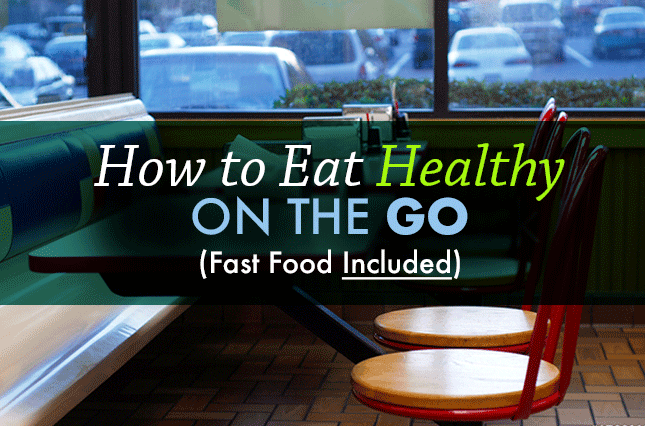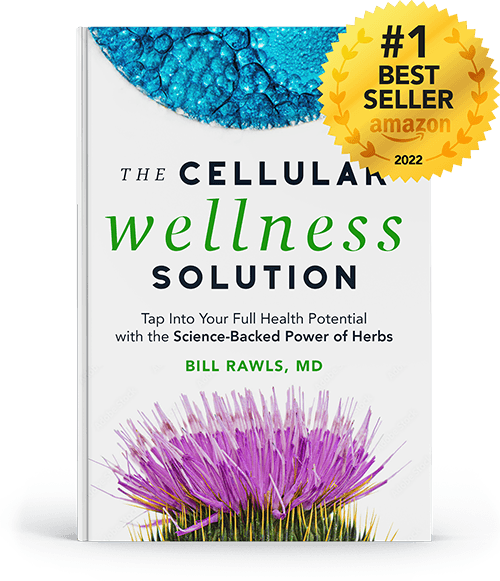Summer is a boon time for healthy food. Freshly harvested, local produce and other good-for-you eats are available not only at farmer’s markets, but also regular grocery stores.
But summer is also a super busy time. With trips to the beach or park, vacations and road trips, and kids’ camp and sports schedules, you probably find yourself eating on the go more often than not. And sometimes fast food — that vilified category which has played a big role in the country’s obesity and health crisis over the years — is your only choice (other than a growling stomach).
The good news: If you’re trying to stick to a healthy diet — eating mostly vegetables, healthy fats, and whole foods, while avoiding highly processed packaged goods, refined carbs, and sugar — you needn’t choose between a gut-wrecking burger and fries or an impromptu fast. You actually have way more options than you might realize.
“Compared to 20 years ago, reasonably healthy food is much more available, even at fast food restaurants and especially during travel,” says Dr. Bill Rawls, M.D., Medical Director of Vital Plan. “Across the board, we have a lot of great food options.”
For example, if you’re in a metropolitan area or city, you probably don’t have to look hard or far for veggie-loaded fare you can get fast and ready to go. “Many new restaurants in bigger cities offer much healthier food,” Dr. Rawls says. He cites chains like Chopt, Diced, and Sweetgreen, which toss salads to order at the counter.
In St. Louis, Burger King has been testing sales of the “Impossible Whopper,” which features a plant-based patty from the popular brand Impossible Foods. Results have been positive, which could suggest the “burger” might be more widely available soon; foot traffic at Impossible Burger locations outperformed the chain’s national average by more than 18%.

If you’re traveling in more rural areas where healthy choices aren’t always readily available, the best option, of course, is planning ahead and BYO-ing your meals and snacks. But doing that isn’t always realistic or possible. Here, some useful tips and suggestions on precisely what to order to help you eat well no matter how much of a rush you’re in when your stomach starts to grumble.
1. Expand Your Definition of Fast Food Restaurant.
If you have time to skip the drive-thru, park the car, and actually walk inside a building, your options for a healthy grab-and-go meal multiply greatly. For instance, consider grocery stores and superstores like Target, Costco, and Walmart, which often offer ready-made or make-your own salads, hot soups, and even sushi. Even on road trips, you can usually find large superstores near the highway.
“When I travel, I carry a soft cooler with me and Google ‘Whole Foods’ or other natural food store where I can stock up on apples, nut butters, carrots, berries or salads,” Dr. Rawls says. “Even standard grocery stores now offer plenty of healthy and organic options.”

To get in and out of the store quickly, avoid the center aisles (that’s where all the processed junk lives), head straight for the produce and deli sections, and use self checkout where lines are usually the shortest. (Give yourself extra points for getting some extra steps into your day, too!)
There’s also another category of restaurants called “fast casual.” These include spots like Panera, Chipotle, Panda Express, and Boston Market, which often offer fresher, healthier menu items than typical drive-thru joints, but still will have them bagged up and ready for you to take out relatively quickly.
“Panera’s claim to fame was bread, but somewhere along the way it seems like they got a really progressive dietician to help design a menu that includes a lot of non-bread items like salads and power bowls,” Dr. Rawls says. Chipotle likewise offers salads and burrito bowls which put healthy toppings like beans, grilled chicken, and veggies on a bed of rice or greens.
2. Beware the Three C’s: Crispy, Creamy, and Chemical Sweeteners
You can’t blame restaurants for using creative language to make their food sound as appetizing as possible. But doing so often masks just how unhealthy certain items are.

For example, “crispy” is synonymous with “fried.” “Creamy” usually means loaded with oil-based sauces (“smothered” is another word for the same). And “sugar-free” or “no sugar added” may hide the fact that an item is laden with chemical sweeteners.
Some healthier adjectives to look for when it comes to cooking methods include “grilled,” “sautéed,” and “steamed,” all of which use a minimal amount of fat. As for chemical sweeteners, your surest bet for sidestepping them is to opt for whole foods (fruits, vegetables, nuts). Otherwise, check the label, or look online – many chain restaurants now post complete ingredient lists for all their menu options, just search the restaurant name and “nutrition.”
3. Where’s the Beef? Not Here.
Generally speaking, ordering anything but beef as your main protein is going to significantly reduce your intake of calories, total fat, and saturated fat — the kind that raises HDL (bad) cholesterol and increases your risk for heart disease and stroke. That’s especially true if you order the grilled chicken or fish versus the crispy one (see tip #2, above).
Check out a few examples, below, to get a sense of how significant a difference a change in your lunch order can make:

4. Go with the Bread-Free Option.
Burgers, flatbreads, subs, and wraps occupy the most space on fast-food menus. But all those refined carbohydrates in buns and tortillas can come with consequences over time, including health concerns like insulin resistance, gut issues like leaky gut syndrome and dysbiosis, loss of collagen, and more.
Fortunately, nearly all major fast food restaurants now offer salads or bowls as an alternative (which is especially good news for those with gluten sensitivities). For example, Wendy’s menu includes a Berry Burst Chicken Salad with fresh berries and an Apple Pecan Chicken Salad. Even Subway, the sandwich-centric shop, has a rotisserie chicken salad.
A note of caution: be careful of salad dressings, which can often deliver a double whammy of processed vegetable oil (meaning free radical-forming omega-6 fat) and sugar. If possible, ask for your salad tossed with a simple olive oil and vinegar, or get your dressing on the side and limit the amount you pour on.

Not feeling a salad? Check out Taco Bell’s “Power Menu,” which offers a bowl anchored by rice and beans that you can load up with lettuce, tomato, guacamole, onions, and grilled chicken. Smoothie shops are another great option, so long as you watch what goes into the blender. “A lot of them use mixes that are just loaded with sugar,” Dr. Rawls says. “Look for one that uses fresh ingredients or has options with no sugar or sweeteners.”
5. Order Off the Kids’ Menu
When you definitely don’t “want fries with that,” consider asking for one of the healthy sides offered with kids’ meals. Most fast food spots have at least one fruit-based option such as a bag of apple slices (McDonald’s, Wendy’s), unsweetened applesauce (Burger King, Chick-fil-A, Subway), or a fruit cup (Chick-fil-A). McDonald’s also has Yoplait Gogurt as an apple slice alternative. These may not be on the main menu, but inquire about ordering them separately, apart from the kids’ combo.
6. Upgrade Your Soda.
Soda or other sweetened drinks are typically loaded with sugar or artificial sweeteners. For instance, order a small Coca-Cola from McDonald’s, and you’ll have 39 grams of sugar in your cup. If you’re following the American Heart Association guidelines — which recommend no more than 38 grams of added sugar daily for men, and no more than 25 grams a day for women — you’ve already surpassed your daily quota of sugar from discretionary calories.
Fortunately, soda isn’t the only choice for quenching your thirst. There’s always water or coffee (skip the cream and sugar). Check the kids’ menu again for Honest Kids juice boxes, which are organic and (truly) unsweetened.

When road-tripping, Dr. Rawls is a big fan of McDonald’s unsweetened iced tea, which he takes with a squeeze of fresh lemon from the wedges on the beverage station. Still craving the zing of a carbonated beverage? Ask for carbonated water from the soda machine and squeeze in a few lemon wedges.
7. Have Breakfast for Any Meal.

If you want a meat-free but protein-packed fast food option, look to the breakfast menu, which many restaurants now let you order from all day (or at least a limited version). “For those times when fast food was my only option, I’ve ordered one of the egg sandwiches and then just tossed the biscuit,” Dr. Rawls says. Prefer your eggs scrambled versus omelet-like? Order a breakfast burrito, spoon out the filling, and then ditch the tortilla.
8. Give the Gas Station a Chance.
If you’re used to paying at the pump, you might be surprised by what gas stations now stock on their shelves beyond candy, chips, and soda. From produce like apples, bananas, and bags of carrots to single-serve hummus and yogurt containers to hard-boiled eggs and nuts of all kinds, you’re likely to find several healthful ways to keep your stomach full — and your gut happy.

Of course, not all gas stations are created equal. You can usually tell which stations have more options by how big they are. Bypass stations with lots of gas pumps and a tiny cashier stand, and instead pull into one that looks like a real convenience store.
Travel plazas are another good bet. Some house coffee chains like Starbucks, which often have refrigerator cases of pre-made meal or snack boxes with goodies like fruit, vegetables, nut butters, and hard-boiled eggs.
Regardless of which of these tips you follow, remember that you, yourself are a key part of the equation when it comes to eating well on the go, Dr. Rawls says. “Good, healthy food is often available if you look hard enough, but people tend to not make those choices,” he says.
So before you even get to the point where you’re faced with making a decision about what to eat, be sure you keep your diet goals in mind and commit to sticking with your healthy habits.



Discover more in Dr. Bill Rawls' new #1 Bestselling book: The Cellular Wellness Solution: Tap Into Your Full Health Potential with the Science-Backed Power of Herbs.
"An eye-opening and empowering book that the world needs right now: The Cellular Wellness Solution will fundamentally change how you think about herbs and the powerful role they play in cultivating wellness at the cellular level."


Mark Hyman, MD
Fourteen-time #1 New York Times Bestselling Author
Looking for More Wellness Tips?
Join our newsletter for bi-weekly tools, education, and savings to boost your health.



